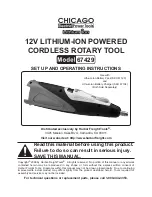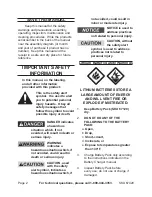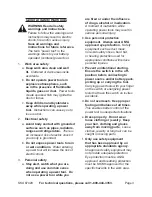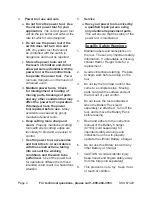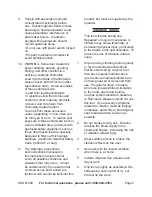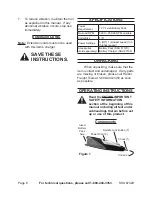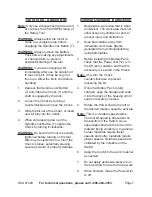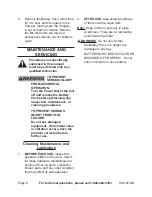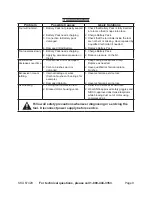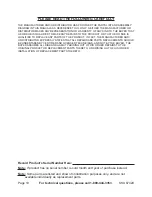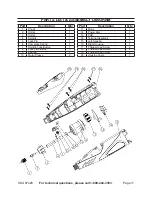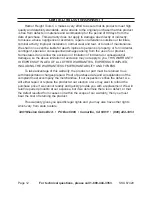
Page 3
For technical questions, please call 1-800-444-3353.
SKU 67429
general safety warnings
warning read all safety
warnings and instructions.
Failure to follow the warnings and
instructions may result in electric
shock, fire and/or serious injury.
save all warnings and
instructions for future reference.
The term ″power tool″ in the
warnings refers to your battery-
operated (cordless) power tool.
work area safety
1.
Keep work area clean and well
a.
lit.
Cluttered or dark areas invite
accidents.
do not operate power tools in
b.
explosive atmospheres, such
as in the presence of flammable
liquids, gases or dust.
Power tools
create sparks which may ignite the
dust or fumes.
Keep children and bystanders
c.
away while operating a power
tool.
Distractions can cause you to
lose control.
electrical safety
2.
avoid body contact with grounded
a.
surfaces such as pipes, radiators,
ranges and refrigerators.
There is
an increased risk of electric shock if
your body is grounded.
do not expose power tools to rain
b.
or wet conditions.
Water entering
a power tool will increase the risk of
electric shock.
Personal safety
3.
stay alert, watch what you are
a.
doing and use common sense
when operating a power tool. do
not use a power tool while you
are tired or under the influence
of drugs, alcohol or medication.
A moment of inattention while
operating power tools may result in
serious personal injury.
use personal protective
b.
equipment. always wear ansi-
approved eye protection.
Safety
equipment such as dust mask,
non-skid safety shoes, hard hat,
or hearing protection used for
appropriate conditions will reduce
personal injuries.
Prevent unintentional starting.
c.
ensure the switch is in the off-
position before connecting to
power source and/or battery pack,
picking up or carrying the tool.
Carrying power tools with your finger
on the switch or energizing power
tools that have the switch on invites
accidents.
do not overreach. Keep proper
d.
footing and balance at all times.
This enables better control of the
power tool in unexpected situations.
dress properly. do not wear
e.
loose clothing or jewelry. Keep
your hair, clothing and gloves
away from moving parts.
Loose
clothes, jewelry or long hair can be
caught in moving parts.
only use safety equipment
f.
that has been approved by an
appropriate standards agency.
Unapproved safety equipment may
not provide adequate protection.
Eye protection must be ANSI-
approved and breathing protection
must be NIOSH-approved for the
specific hazards in the work area.

